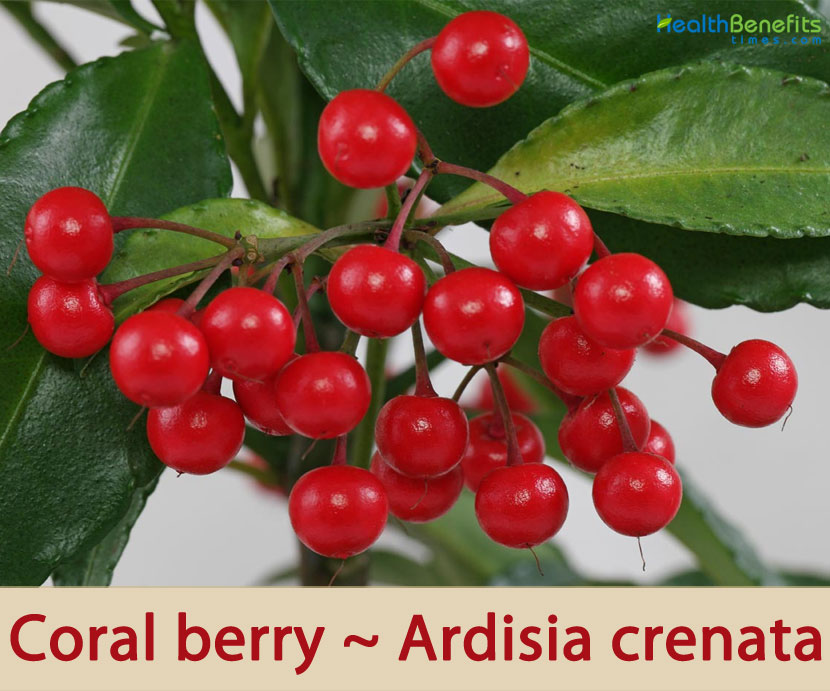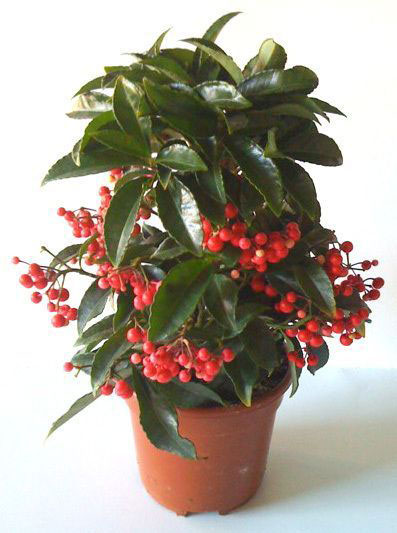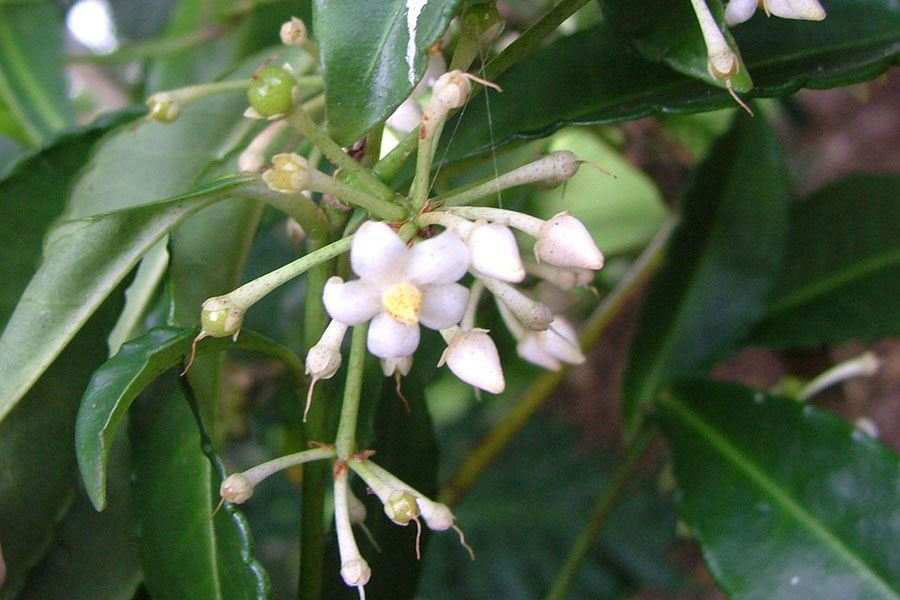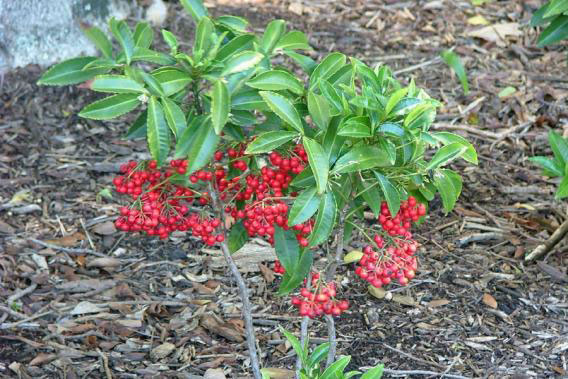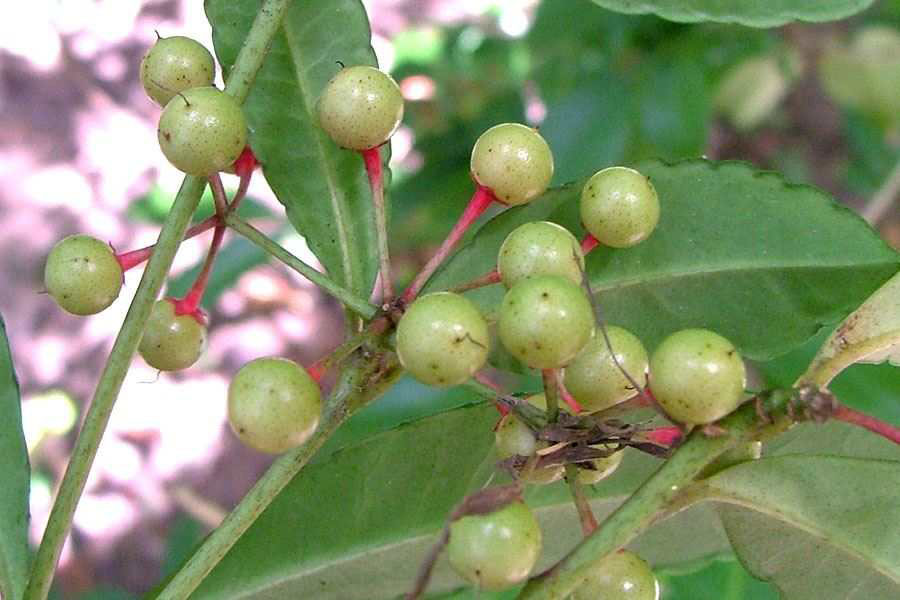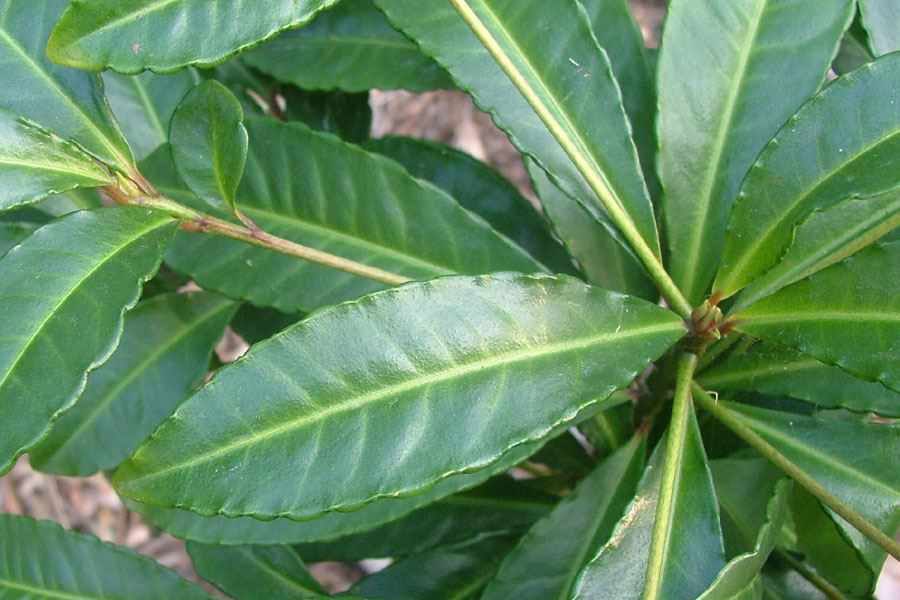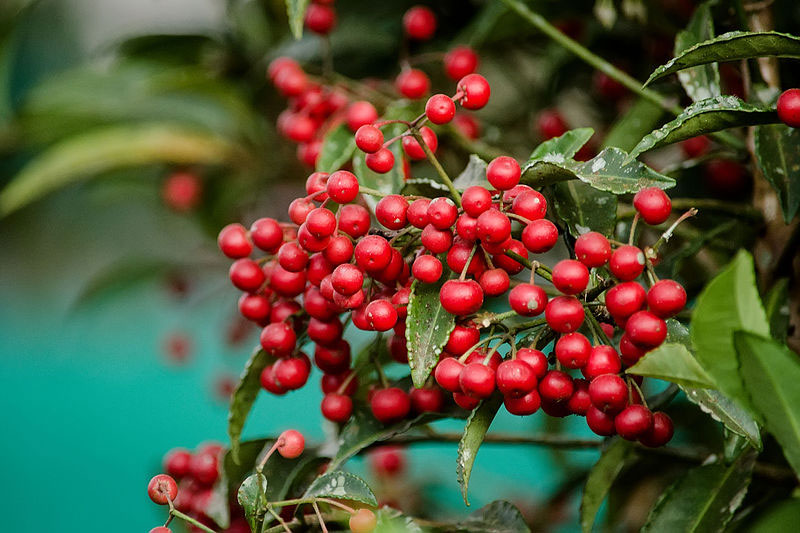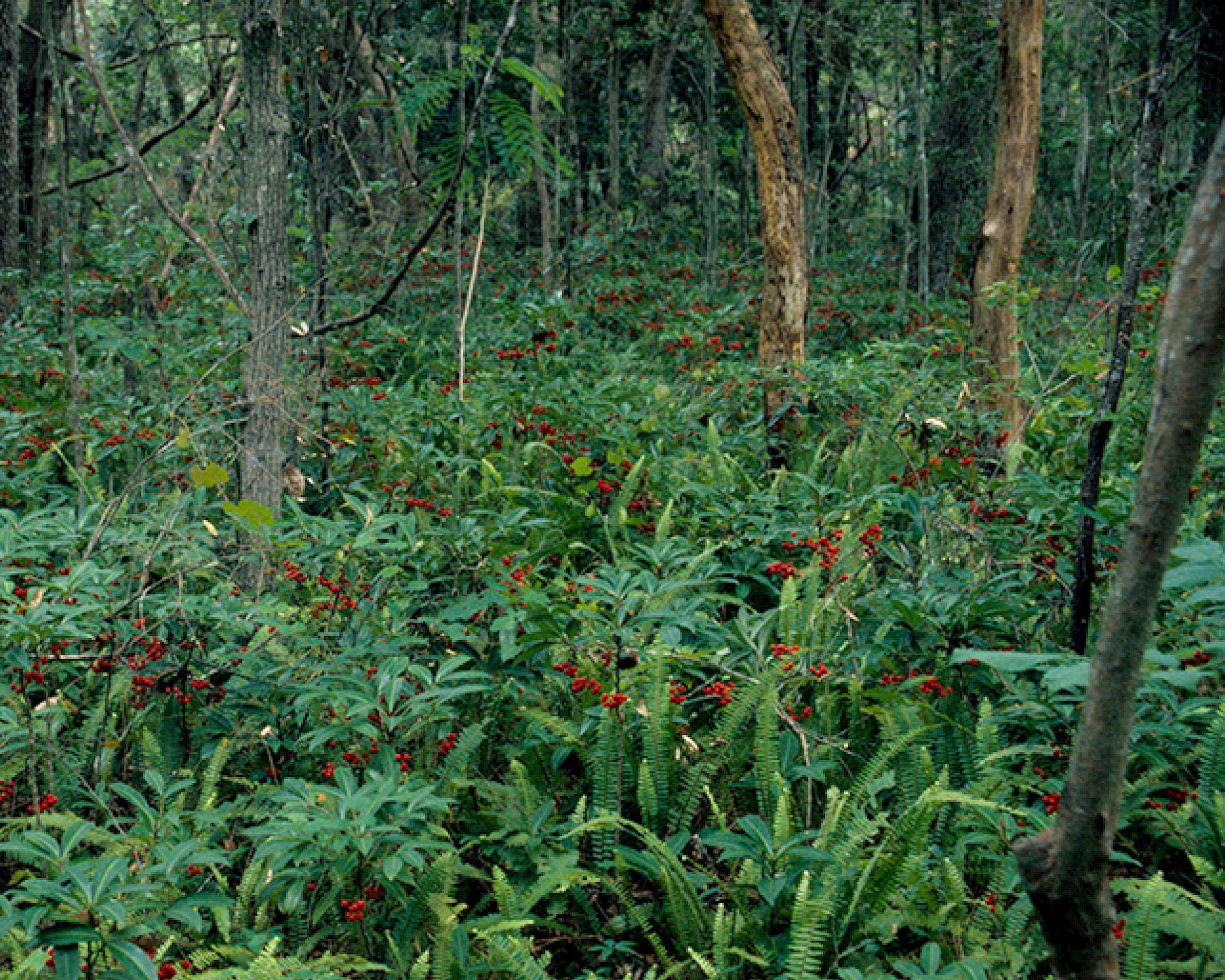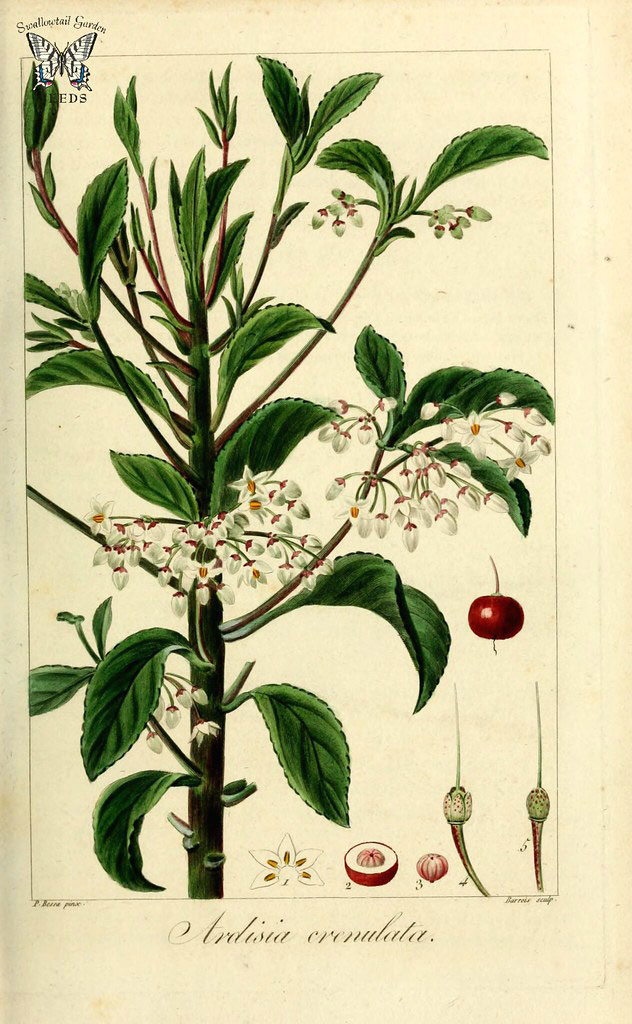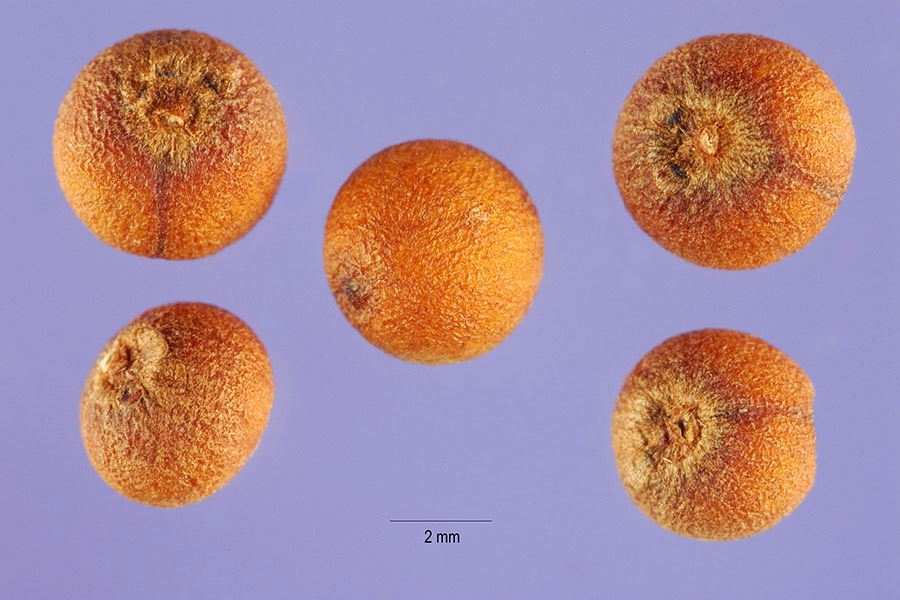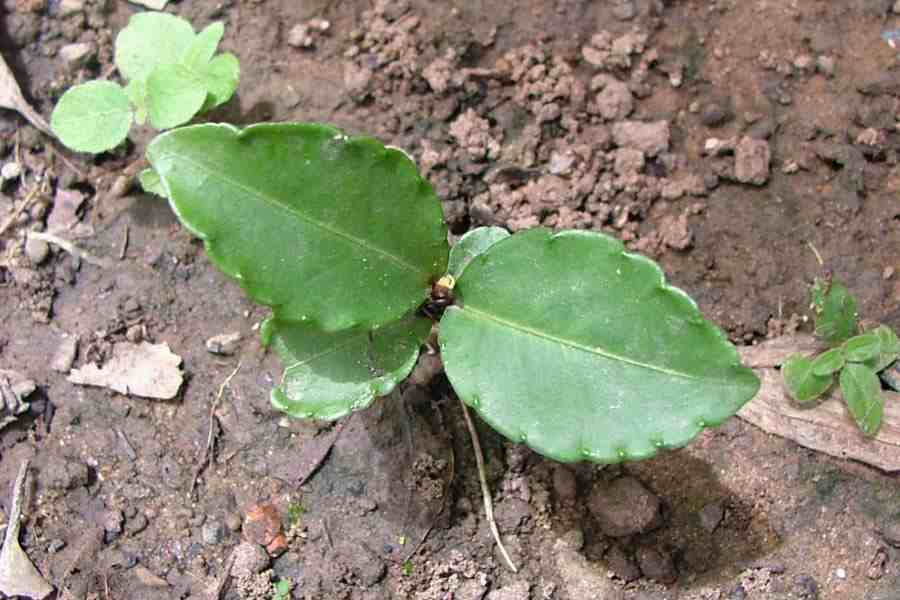| Coral berry Quick Facts | |
|---|---|
| Name: | Coral berry |
| Scientific Name: | Ardisia crenata |
| Origin | Asia temperate – Japan, South Korea, Taiwan, China, Bhutan and Asia tropical, India, Sri Lanka, Myanmar, Thailand, Vietnam, Malaysia and Philippines. |
| Colors | Initially green in color but turn various shades of red as they mature. |
| Shapes | Showy bright berries actually drupes that are rounded (i.e. globose) in shape, glossy in appearance, and 5-8 mm across. |
| Taste | Sweet, Astringent |
| Health benefits | Support tonsillitis, tooth- ache, trauma, arthralgia, respiratory tract infections, menstrual disorders, parasitoses, fever, earaches and skin diseases |
| Name | Coral berry |
|---|---|
| Scientific Name | Ardisia crenata |
| Native | Asia temperate – Japan ( Honshu (south), Kyushu, Ryukyu Islands, Shikoku); South Korea; Taiwan, China (Anhui, Fujian, Guangdong, Guangxi, Hainan, Hubei, Hunan, Jiangsu, Jiangxi, SW Xizang, Yunnan, Zhejiang) to Bhutan and Asia tropical, India, Sri Lanka, Myanmar; Thailand; Vietnam, Malaysia and Philippines |
| Common Names | Coral Ardisia, Coral Bush, Coralberry, Coralberry Tree, Hen’s-Eyes, Hilo Holly, Japanese Holy, Spear Flower, Spiceberry, Village Ardisia, Australian holly, Christmas berry, scratch throat, brazil pepper, pink pepper, Peruvian peppe |
| Name in Other Languages | Afrikaans : Koraalbessieboom Chinese : Yun Chi Zi Jin Niu, Zhu Sha Gen (朱砂根), Chu Sar Gun, Tiě yǔsǎn (鐵雨傘) Czech : Klíman Vroubkovaný Danish: Koralevighedsbær Dutch: Koraalbessenboom English: Coral ardisia, Coralberry, Coralberry-tree, Coralbush, Hen’s eyes, Spiceberry, scratchthroat, Australian holly, Hilo holly, coral ardisia, brazil pepper, pink pepper, Peruvian peppe Estonian : Täkiline Ardiisia Finnish: Ardisia French : Arbre à noél, baie corail, bois de noel, arbre de noel, ardisie crénelée German: Gekerbte Spitzblume, Gewürzbeere, Korallenbeere, Spitzenblume Indonesia: Mata Ayam, Popinoh, mata itik, meta pemanduk Italian: Ardisia Japanese: Manryo (マンリョウ) Khmer: Ping Chap Korean: Baek-Ryang-Geum, baeglyang-geum (백량금), wang baek ryang geum (왕백량금) Malaysia: Mata Ayam, Mata Pelandok, Mata itek Persian: آردیسیا Philippines : Atarolon, Tagpo Polish : Ardizja Drzewiasta Portuguese: Azevim, baga-coral Russian: Ardiziya gorodchataya (ардизия городчатая) Spanish: Ardisia Swedish: Ardisia Thai : Chamkhruea, Tinchamkhok, Tappla, Ĉā kherụ̄x (จ้าเครือ) Upper Sorbian: Aziska ardizija Vietnamese: Troun Dua, Com Ngor Raw |
| Plant Growth Habit | Small, ornamental, erect, perennial, evergreen shrub or small tree |
| Growing Climates | Closed forests, hillsides, valleys, shrubby areas, dark damp places, lowlands, near forest margins and along waterways, invade scrub, sand hill, mesic flat woods, hydric hammocks, bottomland forests, maritime ham-mocks, lake shores, and ruderal communities, pastures, old fields, fencerows, railroads and roadsides |
| Soil | Grows on all soil types from acid to alkaline soils that are well drained |
| Plant Size | Up to 1.5m tall |
| Bark | Brown, peeling into small, short flakes that are easily rubbed off or shredded into long, thin strips |
| Wood | Soft, nearly white, with a small pith |
| Twigs | Flexible, slender, and brown; the young twigs have curved white hairs, becoming smooth with age. |
| Leaf | Simple leaves are 5-20 cm long and 1-4 cm wide and are alternately arranged and dark green in color. They are relatively thick and leathery in nature and narrowly oval or elongated in shape (i.e. elliptic-lanceolate or oblanceolate |
| Flowering season | April to October |
| Inflorescence | Inflorescence sub-umbellulate or corymbose, terminal on terete branchlets |
| Flower | Flowers are 4-6 mm across and usually have five small sepals (1-2.5 mm long) with rounded tips (i.e. obtuse apices), five petals, and five stamens. The five white, or occasionally pinkish, petals are about 4 mm long and are slightly joined together at the base and have pointed tips |
| Fruit Shape & Size | Showy bright berries actually drupes that are rounded (i.e. globose) in shape, glossy in appearance, and 5-8 mm across |
| Fruit Color | Initially green in color but turn various shades of red as they mature |
| Taste | Sweet, Astringent |
| Plant Parts Used | Bark, leaves, fruits, root, juice |
| Propagation | By seed or Stem cutting |
| Season | November to March |
| Other Facts |
|
Plant Description
Coral berry is a small, ornamental, erect, perennial, evergreen shrub or small tree that normally grows up to 1.5m tall, growing in multi stemmed clumps with only flowering branches. The plant is found growing in closed forests, hillsides, valleys, shrubby areas, dark damp places, lowlands, near forest margins and along waterways, invades scrub, sand hill, mesic flat woods, hydric hammocks, bottomland forests, maritime ham-mocks, lake shores, ruderal communities, pastures, old fields, fencerows, railroads and roadsides. The plant grows on all soil types from acid to alkaline soils provided they are well drained. It prefers partial shade but can withstand full sun. The plant performs poorly in cold climate and is killed by hard freeze.
Stem
The stems are usually only branched in the upper part of the plant. The younger branches are rounded about 3-4 mm thick and green in color. Stems and leaves are generally hairless (i.e. glabrous) throughout. Twigs are flexible, slender, and brown. The young twigs have curved white hairs, becoming smooth with age. Bark is brown, peeling into small, short flakes that are easily rubbed off or shredded into long, thin strips. The wood is soft, nearly white, with small pith.
Leaves
The simple leaves are 5-20 cm long and 1-4 cm wide and are alternately arranged and dark green in color. They are relatively thick and leathery in nature and narrowly oval or elongated in shape (i.e. elliptic-lanceolate or oblanceolate. These leaves are glossy and dark green above with paler and duller undersides and have slightly toothed (i.e. crenulate) or finely wavy (i.e. undulate) margins. They are borne on short stalks (i.e. petioles) about 3-10 mm long and have pointed tips (i.e. acute to acuminate apices). Each leaf has a central vein with 12-18 pairs of side veins (i.e. lateral nerves), which are slightly raised on the lower surface and merge into a distinct vein along the leaf margin (i.e. a marginal nerve).
Flowers
The flowers are small, white to reddish-pink in color, and fragrant. They are borne in clusters on flowering branches 4-16 cm long. These flowering branches usually divide into several smaller branches (i.e. rays) 2-4 cm long, each of which bear numerous flowers on stalks (i.e. pedicels) 5-10 mm long, which elongate further when in fruit. The flowers are 4-6 mm across and usually have five small sepals (1-2.5 mm long) with rounded tips (i.e. obtuse apices), five petals, and five stamens. The five white, or occasionally pinkish, petals are about 4 mm long and are slightly joined together at the base and have pointed tips (i.e. acute apices). Under close inspection, numerous tiny black spots can be seen on the flowers when they are young (i.e. they are black punctate). Flowering normally starts from April to October.
Fruit
Fertile flowers are followed by showy bright to dark red berries actually drupes that can remain on the plant for several months. These fruit are initially green in color but turn various shades of red as they mature. Populations with white berries also exist. They are rounded (i.e. globose) in shape, glossy in appearance, and 5-8 mm across. Seeds are hard, egg-shaped, flattened on one side, white, and smooth. They are normally one seeded and seeds are able to germinate under a dense canopy and are dispersed by birds and humans. Berries are dispersed by birds and, when present, raccoons through consumption and subsequent excretion and also by water flow.
Traditional uses and benefits of Coral berry
- The plant is widely used as the traditional medicine to cure diseases, e.g. pulmonary tuberculosis, hepatitis, chronic bronchitis and irregular menstruation.
- Its roots have been used in traditional Chinese medicine for the treatment of several kinds of diseases including tonsillitis, tooth- ache, trauma, arthralgia, and respiratory tract infections, and menstrual disorders, parasitoses and also to stimulate blood circulation.
- The root also has anti-fertility effects.
- The leaves are crushed and applied to scurf; it is also applied to the ears in the treatment of earache.
- Juice is used internally against fever, cough, and diarrhea and also used to treat infections of the respiratory tract and menstrual disorders.
- Roots are used in combination with other medicinal plants to wash-out dirty blood in women who suffer from menstrual pain in Thailand.
- The root is anodyne, depurative, febrifuge, antidotal, and diuretic and is used to stimulate blood circulation.
- The leaves are being investigated as a remedy to stop asthmatic contractions and spasms.
- Plant consists of a medicinal substance known as FR900359 that could treat several diseases, including asthma, hypertension and uveal melanoma.
- In Kampung Bawong, Perak, West Malaysia, juice from crushed whole plant used to treat fever, earaches and skin diseases.
- Decoction drunk for broken bones and sprains are also made using the plant.
- Juices from the roots are used to treat coughs, fever, and diarrhea, while a decoction is taken as post-labor tonic.
Culinary Uses
- Young leaves are used in salads.
- The small fruits are sweet and edible.
- The leaves are also taken as vegetable in salads.
- Young shoots eaten as ulam with sambal belachan.
Prevention and Control
Due to the variable regulations around (de)registration of pesticides, your national list of registered pesticides or relevant authority should be consulted to determine which products are legally allowed for use in your country when considering chemical control. Pesticides should always be used in a lawful manner, consistent with the product’s label.
Prevention
Limit planting and remove existing plants within the landscape. If possible, removal should occur before the plant produces seeds. As fruits containing seeds remain on plants for several months, care should be taken not to spread fruits and seeds during the removal process.
Public awareness
Humans are the primary mechanism for long-distance dispersal of A. crenata; therefore constraining transmission by human endeavor is the best way to restrict introduction and establishment of populations.
Control
Cultural control
Cultural management is difficult once the plant has become established, but good ground cover would limit seedling establishment.
Mechanical control
For small or isolated infestations, hand-pulling of plants is effective for seedling control. Larger plants can be cut or burned, but re-growth from roots and root crowns needs monitoring for at least a year. Roots are unable to re-sprout if they are severed from the root crown; therefore root crown removal is essential to prevent re-growth after mechanical control.
Biological control
There are no known biological control agents for Ardisia crenata. However, because invading populations are thought to have originated in China, potential sources of biological control might be found there, within its native range.
Chemical control
Herbicides are effective, but the waxy leaves may prevent some uptake; care should be taken to avoid targeting desirable plants with herbicide applications. One herbicide trial found that application to mature plants suppressed plant cover for 12 months, with highly variable seedling cover within the same period; monitoring and re-treatment at 12 months was recommended for further suppression, especially for emerging seedlings.
References:
http://www.theplantlist.org/tpl1.1/record/kew-2647788
https://www.itis.gov/servlet/SingleRpt/SingleRpt?search_topic=TSN&search_value=183614#null
http://www.hear.org/pier/species/ardisia_crenata.htm
https://pfaf.org/user/Plant.aspx?LatinName=Ardisia+crenata
https://www.cabi.org/isc/datasheet/119055
https://www.missouribotanicalgarden.org/PlantFinder/PlantFinderDetails.aspx?taxonid=282841
https://gd.eppo.int/taxon/ADACN
https://en.wikipedia.org/wiki/Ardisia_crenata
https://keyserver.lucidcentral.org/weeds/data/media/Html/ardisia_crenata.htm
http://www.stuartxchange.com/CoralBerry.html
https://www.invasive.org/weedcd/pdfs/srs/2008/Ardisia.pdf
https://www.invasiveplantatlas.org/subject.html?sub=3008
https://www.nparks.gov.sg/florafaunaweb/flora/3/4/3436
https://plants.ifas.ufl.edu/plant-directory/ardisia-crenata/
http://tropical.theferns.info/viewtropical.php?id=Ardisia+crenata
https://plants.usda.gov/home/plantProfile?symbol=ARCR80


